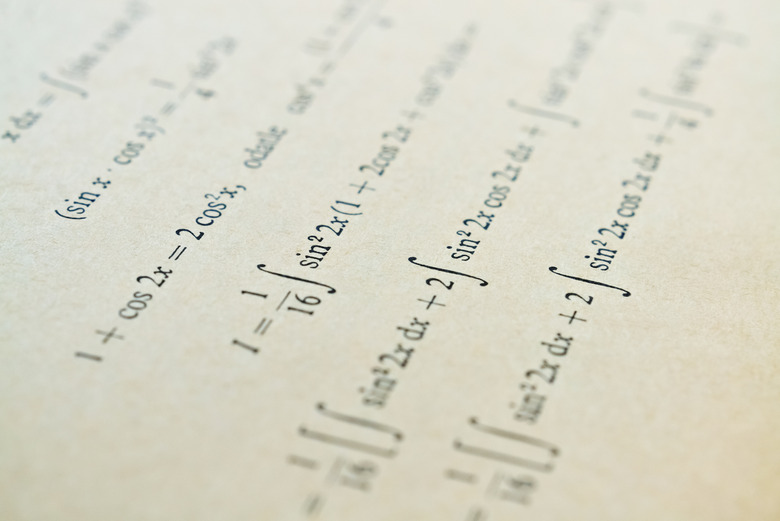How To Calculate The Wronskian
In mathematics, the need sometimes arises to prove whether functions are dependent or independent of each other in a linear sense. If you have two functions that are linear dependent, graphing the equations of those functions result in points that overlap. Functions with independent equations do not overlap when graphed. One method of determining whether functions are dependent or independent is to calculate the Wronskian for the functions.
What Is a Wronskian?
What Is a Wronskian?
The Wronskian of two or more functions is what is known as a determinant, which is a special function used to compare mathematical objects and prove certain facts about them. In the case of the Wronskian, the determinant is used to prove dependence or independence among two or more linear functions.
The Wronskian Matrix
The Wronskian Matrix
To calculate the Wronskian for linear functions, the functions need to be solved for the same value within a matrix that contains both the functions and their derivatives. An example of this is
\(W(f,g)(t)=\begin{vmatrix}
f(t) & g(t) \
f'(t) & g'(t)
\end{vmatrix}\)
which provides the Wronskian for two functions (f and g) that are solved for a single value that is greater than zero (t); you can see the two functions f(t) and g(t) in the top row of the matrix, and the derivatives f'(t) and g'(t) in the bottom row. Note that the Wronskian can be used for larger sets as well. If for example, you test three functions with a Wronskian, then you might populate a matrix with the functions and derivatives of f(t), g(t) and h(t).
Solving the Wronskian
Solving the Wronskian
Once you have the functions arranged in a matrix, cross-multiply each function against the derivative of the other function and subtract the first value from the second. For the example above, this gives you
\(W(f,g)(t) = f(t)g'(t) – g(t)f'(t)\)
If the final answer equals zero, this shows that the two functions are dependent. If the answer is something other than zero, the functions are independent.
Wronskian Example
Wronskian Example
To give you a better idea of how this works, assume that
\(f(t) = x + 3 \text{ and } g(t) = x – 2\)
Using a value of t = 1, you can solve the functions as
\(f(1) = 4 \text{ and } g(1) = -1\)
As these are basic linear functions with a slope of 1, the derivatives of both f(t) and g(t) equal 1. Cross-multiplying your values gives to
\(W(f,g)(1) = (4 + 1) – (-1 + 1)\)
which provides a final result of 5. Though the linear functions both have the same slope, they are independent because their points to not overlap. If f(t) had produced a result of −1 instead of 4, the Wronskian would have given a result of zero instead to indicate dependence.
Cite This Article
MLA
Gerard, Jack. "How To Calculate The Wronskian" sciencing.com, https://www.sciencing.com/calculate-wronskian-2666/. 14 December 2020.
APA
Gerard, Jack. (2020, December 14). How To Calculate The Wronskian. sciencing.com. Retrieved from https://www.sciencing.com/calculate-wronskian-2666/
Chicago
Gerard, Jack. How To Calculate The Wronskian last modified August 30, 2022. https://www.sciencing.com/calculate-wronskian-2666/
